This is a powerpoint presentation produced by INCE and the Environmental Law Institutte and shared at the STRIPE III conference in June 2016.
Topics: Access to Justice

This illustrated handbook for community and civil society organisations gives clear guidance on public engagement in environmental impact assessments.
By Daniel Barragan (Posted: February 19, 2013)
Los días 27 y 28 de Enero del 2013 se realizó en Santiago de Chile la I Cumbre de la Comunidad de Estados Latinoamericanos y Caribeños (CELAC).
La Comunidad de Estados Latinoamericanos y del Caribe agrupa a todos los países de América Latina y el Caribe. Fue creada el 23 de febrero de 2010 en sesión de la Cumbre de la unidad de América Latina y el Caribe, en la ciudad de Playa del Carmen, Quintana Roo, México.
Es un organismo intergubernamental de ámbito regional, heredero del Grupo de Río y la CALC, la Cumbre de América Latina y del Caribe que promueve la integración y desarrollo de los países latinoamericanos.
Los Gobiernos se reunieron en esta oportunidad con el propósito de avanzar en la unidad e integración política, económica, social y cultural de nuestra región.
La Declaración acordada por los Gobiernos destaca la importancia de un diálogo permanente fundado en el principio de la complementariedad y orientado a alcanzar los mejores resultados para lograr el desarrollo solidario e inclusivo de los Estados latinoamericanos y caribeños.
En el párrafo 60 de la Declaración los Gobiernos establecen “Valoramos las iniciativas para la implementación regional del Principio 10 de la Declaración de Río 1992, referido a los derechos de acceso a información, participación y justicia ambiental, como una contribución relevante para la participación de la comunidad organizada comprometida con el Desarrollo Sostenible”.
Es importante destacar el liderazgo que tuvo el Gobierno de Chile para lograr la inclusión de esta mención y valoración del proceso que se ha iniciado en América Latina y el Caribe donde 11 países de la Región en la Conferencia de Desarrollo Sostenible Río+20 celebrada en Río de Janeiro, Brasil en Junio del 2012, 11 países de América Latina y El Caribe (ALC) con el firme apoyo de la sociedad civil y de organismos internacionales como la CEPAL iniciaron un proceso político para la creación de un instrumento para la región que promueva la cabal implementación de los derechos de acceso a la información, la participación y la justicia en la toma de decisiones ambientales. Estos derechos de acceso están contemplados en el Principio 10 de la Declaración de Río de la Cumbre de la Tierra de 1992.
Específicamente los Gobiernos de Brasil, Costa Rica, Chile, Ecuador, Jamaica, México, Panamá, Paraguay, Perú, República Dominicana y Uruguay firmaron la Declaración sobre Aplicación del Principio 10 de la Declaración de Río sobre Medio Ambiente y Desarrollo dando inicio a un proceso para crear un instrumento regional que promueva la transparencia, inclusividad y rendición de cuentas en la toma de decisiones ambientales.
Para mayor información de la CELAC:

By Carole Excell (Posted: March 8, 2016)
Berta Cáceres, a Honduran indigenous and environmental leader and Goldman Environmental Prize Winner has been assassinated.
Those words sent ripples of shock through human rights defenders both in Honduras and internationally. “What can we do about this?” said Danielle Andrade, an environmental lawyer from Jamaica. “I was moved to tears, and I prayed for her family and community,” said activist Karetta Crooks from St. Lucia. Clarisa Vega from IDAHMO Honduras, an environmental law organization, asked for support to ensure that justice was sought. And still others shared their anger that governments in the region need to do more to protect environmental defenders and put a stop to harassment and intimidation.
Indeed, Cáceres’s murder is both tragic and senseless. She fought tirelessly for the rights of Honduras’s Indigenous Peoples, including opposing the Agua Zarca Dam, which would obstruct the Gualcarque River, a source of food and water for local communities. Media reports say that she received death threats from police, the army and landholders’ groups.
A Systemic Problem
Unfortunately, Cáceres’s death is just the most recent attack on an environmental defender. Global Witness’s groundbreaking reports How many More and Deadly Environment highlight the historical vulnerability of those who fight to protect the earth. One hundred and sixteen environmental activists were murdered in 2014 alone. The fact that Honduras is number one in the world for the killing of environmental defenders in Global Witness’s report (per capita) indicates the dire state of affairs.
Cáceres famously said “Nobody heard our voices until we set up a roadblock to defend our territory.” That quote illustrates the problem at the heart of all these attacks on environmental activists— few countries actually guarantee citizens’ rights to safely make their voices heard on environmental issues.
The Environmental Democracy Index evaluates the status of national laws related to the protection of “procedural rights,” or citizens’ legal rights to access information, participate in environmental decision-making processes and seek justice in circumstances where their rights are infringed upon. Honduras scored “less than average” on the Index, ranking 43rd out of 70 countries. In fact, only half the countries included in the Index scored “good” or “above average” on national procedural rights laws. And having laws on the books doesn’t mean that they are necessarily enforced.
Protecting the World’s Environmental Defenders
Protecting environmental defenders requires action to prevent threats and provide security for citizens who are making their voices heard. It requires creating fair and equitable forums for decision-making about potentially environmentally destructive or damaging projects, such as dams, highways, mining sites, factories and more. It requires early notification, consultation and consent from indigenous communities to use their natural resources. It also requires judicial systems that work to hear the grievances of those most affected. And it requires that governments recognize community’s traditional use of natural resources and their rights to land and territory.
Moreover it is the government’s duty to level the playing field between communities and often powerful corporate actors. Even more care must be taken when governments themselves are proposing mega infrastructure projects to boost economic development.
Governments around the world should evaluate their national laws—or lack thereof—designed to protect citizens’ environmental democracy and procedural rights. States in the Latin America and Caribbean (LAC) region in particular could commit to the LAC Principle 10 Regional Declaration, a process governed by the UN Economic Commission for Latin America and the Caribbean (UNECLAC) to develop new standards for laws on procedural rights and the protection of environmental defenders. This opportunity cannot be wasted.
I would encourage everyone who has never heard of Berta Cáceres to view the amazing video produced by the Goldman Prize about her work. It is an inspiration to me personally. In it, she speaks of the risk to her life, but her determination to stand up for Mother Earth and the urgency of the fight. My heart and thoughts—as well as those of many members of The Access Initiative—go out to her family and community at this time. The world has lost an amazing women; Honduras has lost an environmental justice champion.
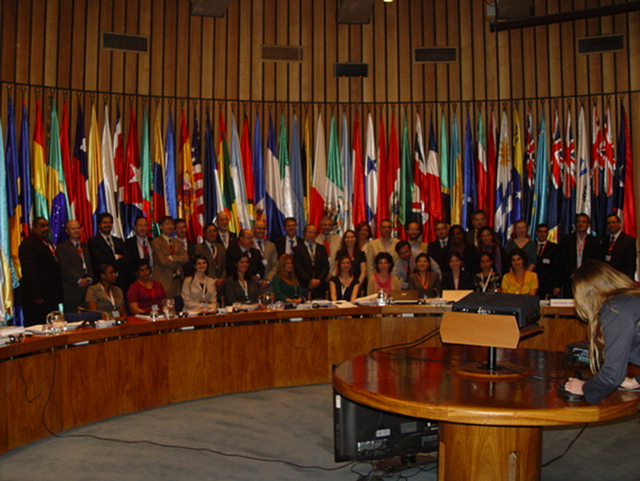
Published: 2016
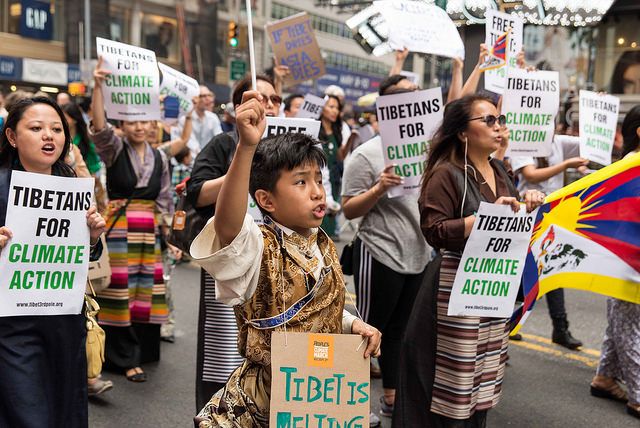
This blog was originally posted on WRI Insights on June 11, 2015.
By Nicholas Tagliarino and Lalanath de Silva
WRI and the Access initiative (TAI) recently launched the Environmental Democracy Index (EDI), the first online platform that tracks and scores 70 countries’ progress in enacting national laws that promote transparency, accountability and citizen engagement in environmental decision-making. These three “environmental democracy” principles are foundational elements for sustainable development and for ensuring basic human rights. While EDI resulted in a comprehensive ranking of countries, the story doesn’t end there. Truly evaluating environmental rights in countries around the world is a lot more complicated than one might think.
The Environmental Democracy Index
EDI assesses national laws against a set of 75 legal indicators designed to show whether a country’s laws conform with the UNEP Bali Guidelines, a set of principles meant to guarantee environmental democracy. EDI’s scores provide insight on the best and worst countries for environmental democracy. National laws establish a foundation on which environmental advocacy can take place. Laws often provide the public and the environment with a set of guaranteed protections. They also serve as a point of reference when the public wishes to challenge government and private actor decisions that harm the environment. While the legal language of environmental democracy laws is important to assess, it also matters whether these laws are actually being implemented, and if there is an enabling environment for citizens to fully capitalize on opportunities set out in these laws. This more comprehensive assessment of environmental democracy depends on broader questions, such as: Are laws enforced and respected in a particular country? Are governments behaving corruptly? Is there an enabling environment for citizens to exercise these rights? Are human rights being violated? EDI has a limited set of 24 practice indicators that provide insight into discrete aspects of law implementation, but these are not yet comprehensive, and practice indicator scores are not accounted for in EDI countries’ overall scores. Viewing EDI’s results together with other global indices provides deeper insights on the extent to which environmental democracy is practiced around the world.
Other Assessments of Environmental Democracy
Transparency International’s 2014 Corruption Perception Index (CPI) assesses public perception of government corruption at the national level. When combined with EDI results, this index sheds light on whether corruption might be undermining the practice of environmental democracy. For instance, Russia, Colombia and Panama ranked in the top 10 on EDI, but in the bottom half of the 175 countries CPI assessed (Russia ranked 136th, Colombia and Panama ranked 94th). These results suggest that corruption levels are perceived as high in these nations, which may undercut national environmental democracy laws. On the other hand, seven of the top 10 EDI countries (Lithuania, Latvia, United States, South Africa, United Kingdom, Hungary and Bulgaria) ranked in the top half of the CPI; the United States and United Kingdom ranked in the top 20. Corrupt governments may be less likely to disseminate environmental information to the public or consider public feedback in environmental decision-making. With lower corruption levels, these countries may be more likely to achieve environmental democracy. Environmental democracy laws are also more likely to be implemented in countries where the law is respected and enforced equally. The World Justice Project’s Rule of Law Index (ROLI) uses survey research to determine how well the laws are respected and enforced (rule of law) in everyday life around the globe. Russia, Colombia and Panama—top-ranked countries on EDI—ranked in the bottom half of the 99 countries ROLI assessed, while the United States and United Kingdom ranked in the top 20. Comparing EDI and the ROLI rankings provides insight on whether countries are likely to follow laws that recognize environmental democracy rights. Environmental democracy rights are also rooted in basic human rights. For instance, the right to free speech must be realized before the public can meaningfully participate in environmental decision-making. Maplecroft’s Human Rights Risk Atlas 2014 (HRRI) rates countries based on their susceptibility to human rights abuses, such as torture, illegal arrests and freedom of speech. Whereas the United Kingdom is rated as having low human rights risks, Russia and Colombia are rated as “extreme risk,” meaning there is a high likelihood of human rights violations in these countries. Until human rights are better respected in Russia and Colombia, it is unlikely that citizens will fully attain the environmental democracy rights that national laws set out.
Improving Environmental Rights Around the World
Because protection of the environment and human rights share common ground, EDI holds an important place among global indices that address human rights concerns. Ultimately, what EDI and these global indices have in common is they establish a benchmark for progress: EDI shows the current state of national environmental democracy laws, the starting point for ensuring citizens’ rights to information, public participation and justice. Other global indices show us whether an enabling environment exists that will allow environmental democracy laws to be fully implemented. It’s important to examine both sides of the coin—the existence of laws as well as their enforcement—so that citizens can exercise their environmental democracy rights and hold governments and private actors accountable.
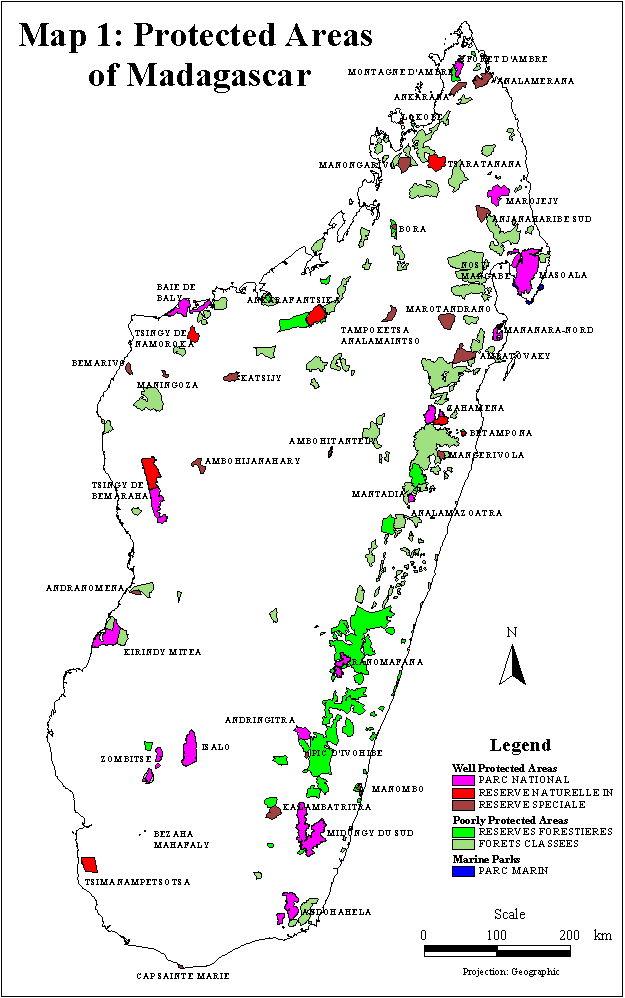
In Madagascar, the Protected Areas Law (COAP) mandates the manager of national parks (MNP) to manage and run conservation activities within and outside the park. Two decades ago, the manager enacted an internal decision by the Board of the Directors, that local communities can benefit 50% of the park entrance fees and can use the funds to development or agricultural activities. 20 years later, the MNP changed its mind and stopped allocating the 50% to the local communities stating that the funds need to be used to support the creation and extension of other protected areas. This change has had negative impacts on the development of local communities. The object of our Campaign is to ensure that the benefit of 50% from the park entrance fees would be recognized by the Protected Areas Law (COAP) and its implementing decrees as a right and not as a favor to assure an equitable sharing of the benefits from the conservation of protected areas. When the local communities utilize their rights, they contribute positively to the conservation of the protected areas.

A Mapuche settlement in the Cautin Province, IX Region of Chile, has been affected by the emission of pollutants into the river channel, the management of the disposal of solid construction waste and the use of medication for the fish. This community is unprotected and uninformed about how can enforce their rights. Therefore, FIMA developed a campaign to advise the indigenous communities in the area of Villarica and Licanray on the drafting and presenting of an injunction before the Environmental Agency (SMA). As a result, every verified infraction was reported to the SMA and an extensive investigation is carried out. In addition, during November 2014, FIMA developed a two-day training workshop in environmental education and empowerment for the community, which was very successful.
The objectives were:
- To ensure the awareness of the legal instruments available for the community.
- To guarantee the protection and the safeguarding of their environmental and indigenous rights.
- To include the community in the process and encourage the participation.
At the end of the course a forum was held to discuss all the topics, make questions and reflect about further directions. In addition, regulation and indigenous consultation were covered.
This campaign will continue with the aim to inform all the communities, and it is expected another session will be organized dedicated to the knowledge of water rights and how to protect them, and the paths available for environmental justice.
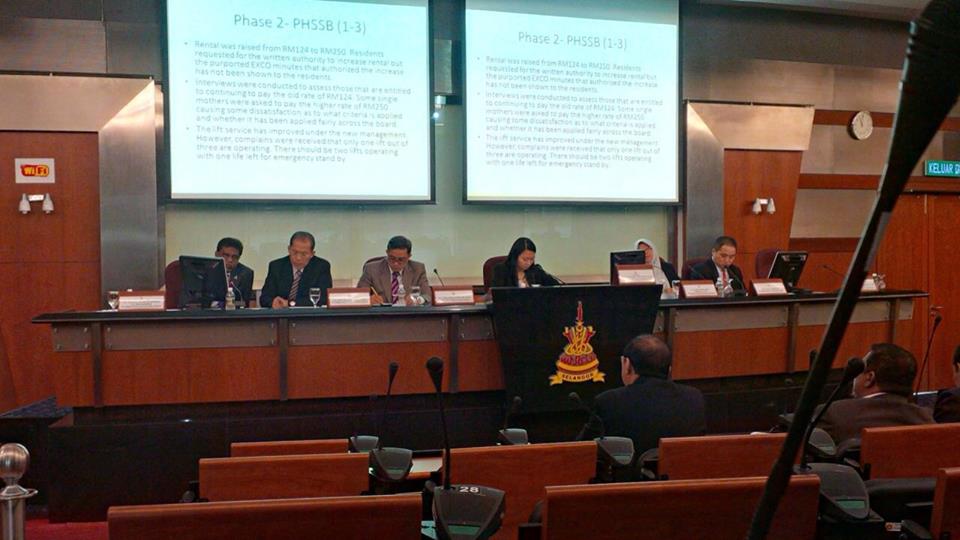
The main objective is to create networks of NGOs/CSOs that will leverage on each other strength while synergizing on its purpose. Pilot projects initiated under this campaign will always focus on creating a strong value chain between all actors that will institutionalize solutions between NGOs, Communities, and Local Governments. This network will provide a stronger advocacy voice that will result in better policies and action plans by authorities and government.
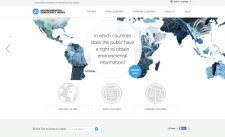
By Jesse Worker (Posted: May 20, 2015)
The environment and human well-being are inextricably linked. When governments, businesses and others make decisions about land and natural resources, they inevitably impact the health, livelihoods and quality-of-life of local communities. So it stands to reason that the public should have a right to be involved in environmental decision-making—specifically, to know what is at stake, to participate in the decision itself, and to have the ability to challenge decisions that disregard human rights or harm ecosystems. These three fundamental rights are known as environmental democracy—and not all nations provide it to their citizens. The new Environmental Democracy Index (EDI) is the first-ever online platform that tracks and scores 70 countries’ progress in enacting national laws that promote transparency, accountability and citizen engagement in environmental decision-making. The analysis, based on 75 indicators, identifies the best and worst countries for environmental democracy. The results may surprise you.
The Top Countries with Strong National Laws for Environmental Democracy
The top three countries are all former Soviet states—Lithuania, Latvia and Russia. Many of their relevant national laws were enacted as part of democratization reforms in the 1990s and the United Nations Economic Commission for Europe’s (UNECE) legally binding Aarhus Convention on access to information, public participation and access to justice in environmental matters. Lithuania and Latvia have both ratified this convention and strengthened their legislation after doing so, such as Lithuania’s amendments to its Law on Environmental Protection and Latvia’s passage of its Environmental Protection Law. Russia in particular may stand out to some as surprising, especially in light of several environmental activists recently fleeing the country out of fear for their freedom and safety. Therein lies a powerful lesson: Countries’ national laws may be quite progressive on paper, but the enforcement of those laws is oftentimes weak or subject to corruption. All of the top 10 performers have statutes to support the public’s right to access government-held environmental information such as forestry management plans or mining permits, and all of them require at least a majority of government agencies to place environmental information like air and drinking water quality information in the public domain. While public participation scored the lowest across the index, all of the top 10 countries provide the public with the right to participate in major, national environmental decisions, such as infrastructure projects, forest management planning, pollution permitting and more. Lithuania stands out for having the highest score on the justice pillar. Its Civil Procedure Code and Law on Environmental Protection provides for communities to bring environmental cases in the public interest. What’s also interesting about the top 10 performers is that wealth is not necessarily the defining factor of strong environmental democracy laws. Panama and Colombia are resource-strapped nations, and South Africa is an upper middle income country; nevertheless, they’ve committed to enacting strong environmental laws.
The Lowest-Scoring Countries for Environmental Democracy
Haiti, Malaysia and Namibia scored lowest on the index. Of the bottom 10 countries, some had right-to-information laws, but most lacked provisions requiring that government agencies proactively make environmental information public. In countries like Philippines, Republic of Congo and Pakistan, citizens need to go through time-consuming or expensive information requests to obtain crucial information like statistics on air or drinking water quality. The government may or may not honor these formal requests. Many of the bottom performers also lacked requirements on collecting environmental information and monitoring compliance. National governments in Ethiopia, Nicaragua, Guatemala, Bangladesh and Thailand do not actually ensure that factories, mines and other facilities aren’t harming people or the planet. And requirements for public participation in these countries are almost always limited to environmental impact assessments, leaving out other important decisions such as the development of forest management plans, protected area policies or environmental protection laws. One positive note is that even at the bottom of the list, Saint Lucia, Nepal, Sri Lanka and the Republic of Congo allow an individual to file lawsuits in the public interest. Otherwise, the right to challenge or appeal government or private sector decisions is not as well established in these countries.
There’s Room for Improvement Across the Board
Even in countries that scored relatively well, there’s still room for improvement. Almost 50 percent of the countries assessed, for instance, are not making real-time air quality data available online for their capital cities. And while nearly half of the countries require agencies to monitor environmental compliance, 64 percent of those with laws on the books do not release any information to the public on emissions or wastewater discharges, pollutants that can impact human health and the environment. And even if countries have strong laws on the books, it doesn’t mean that they are adequately enforced. EDI measured countries based on the existence of national laws, not implementation. However, supplemental to the legal index, EDI includes 24 indicators on environmental democracy in practice. These indicators are not comprehensive, but they do provide some key insights to allow some comparison with legal scores. National laws aren’t the only way to improve environmental democracy, but they’re an important first step. EDI can help governments who want to promote transparent, inclusive and accountable environmental decision-making by providing an index to benchmark progress, as well as examples of good practices from around the world. It’s time to give citizens a voice—for the good of the planet, and for the good of communities around the world.